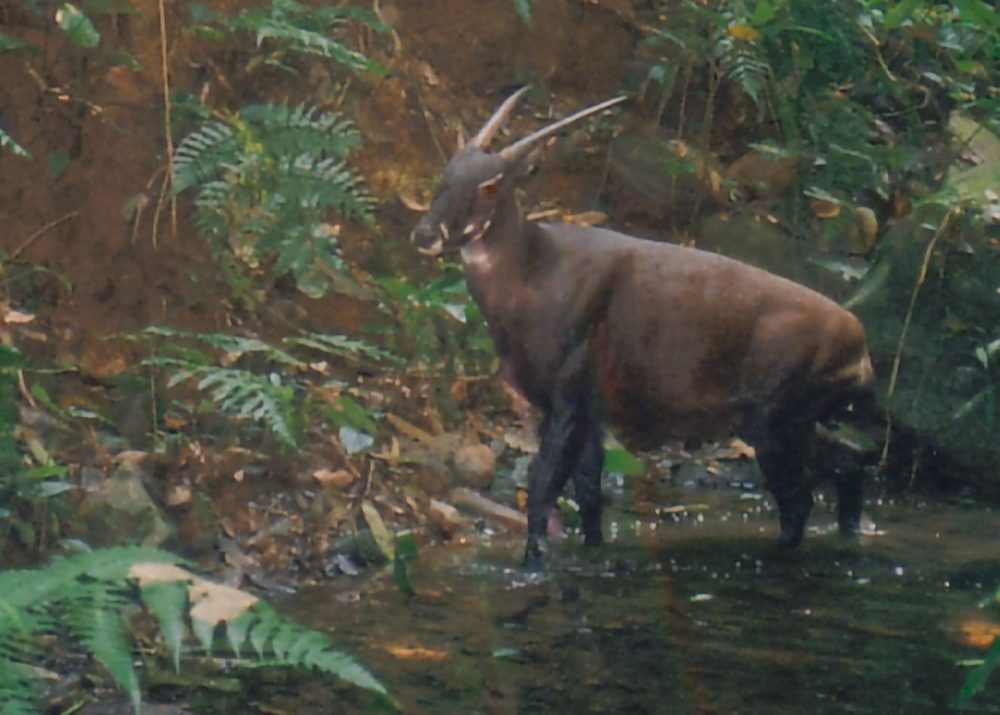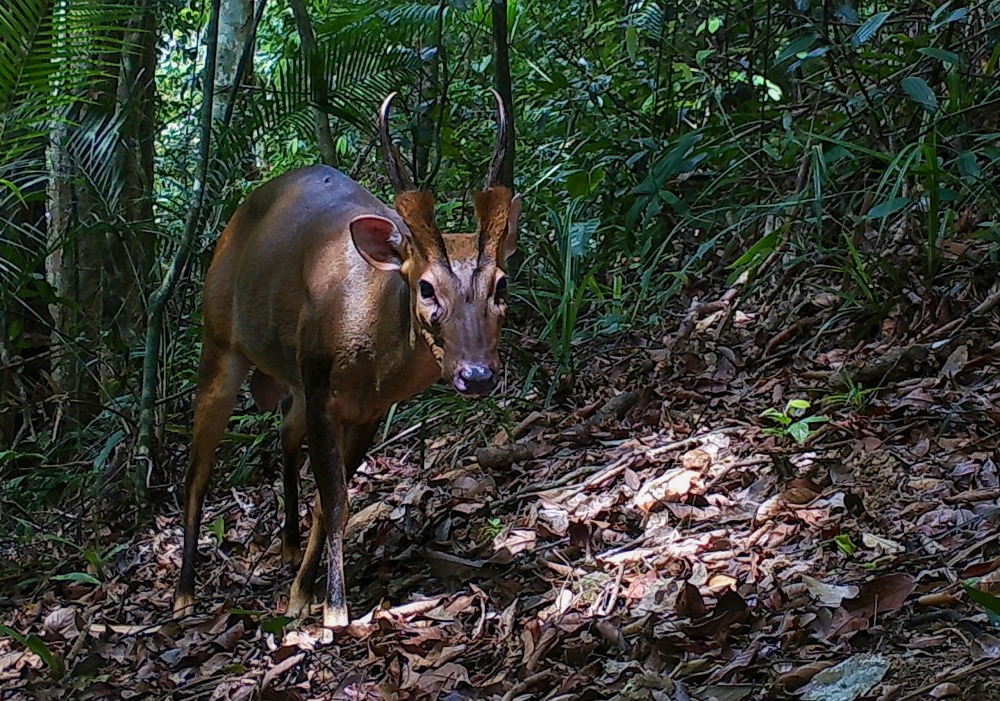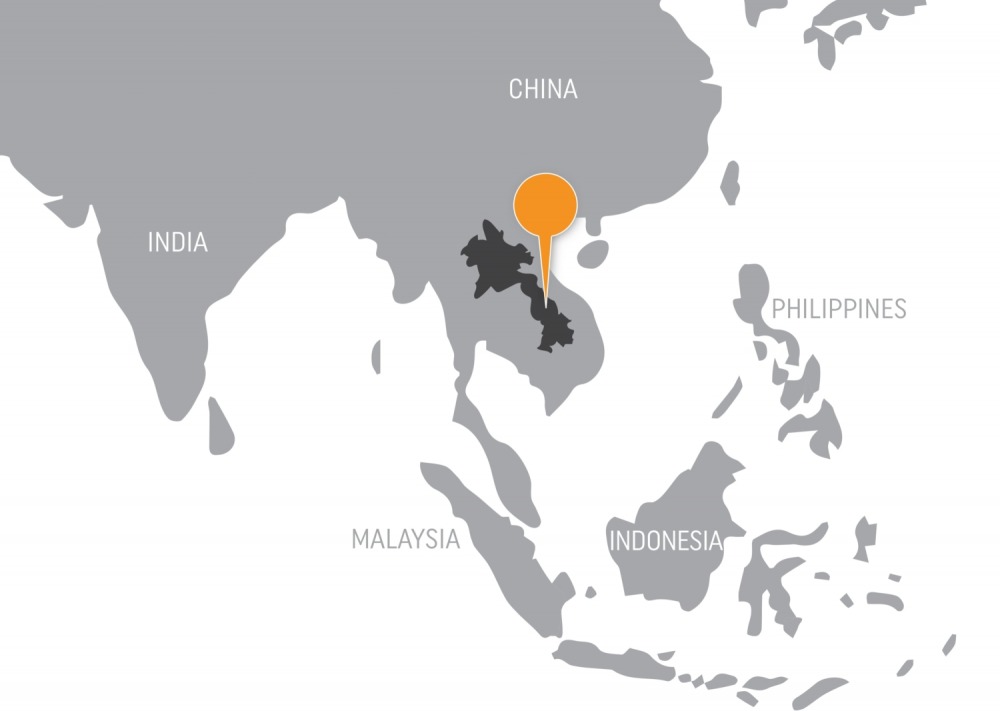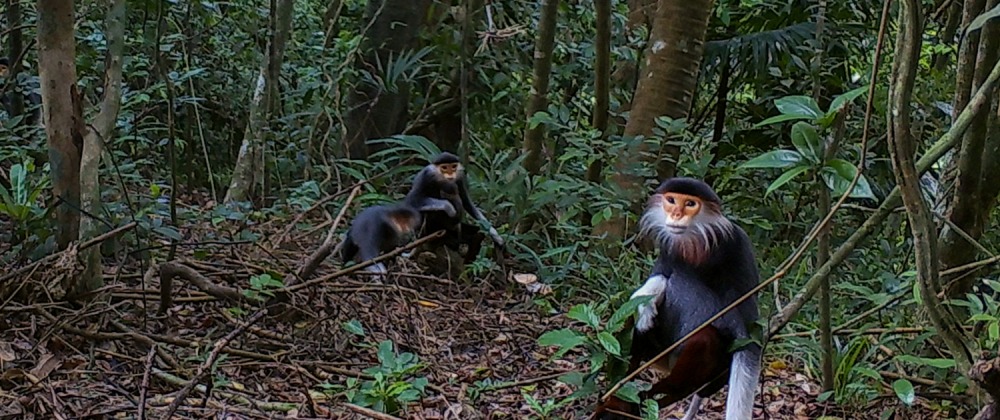Rainforest Trust is Saving Habitat in Laos for the Rare Asian Unicorn

133,098 acres of critical habitat comes under protection
Rainforest Trust is working with Asian Arks to conserve the Khoun Xe Nong Ma National Protected Area that was recently declared by the Government of Lao PDR. The KXNM area covers approximately 133,000 acres of the Upper Xe Bang Fai-Laos Key Biodiversity Area in the Annamite mountain range. This mountain range in Laos and Vietnam has one of the highest species endemism concentrations of any continental ecoregion on the planet and KXNM is one of the last undisturbed forest stretches in the region.
This forest is home to many endangered species. The critically endangered Saola, also called the Asian Unicorn due to its mysterious and elusive nature, was first discovered in the region in 1992. The antelope-like species seen in the header image is one of the least-studied large mammals in the world due to its very rare sightings and its remote and inaccessible forest habitat. Due to the scarcity of the species, it is difficult for scientists to estimate population numbers, but based on reported sightings it is likely that no more than a few hundred still survive at best.
Recent biological surveys and camera traps positioned throughout the new reserve did not find evidence of the Saola, but did confirm populations of other critically and endangered species including the Large-antlered Muntjac, Annamite Striped Rabbit, Southern White-cheeked Gibbon and Red-shanked Douc Langur.

The new protected area encompasses one of the last remaining relatively undisturbed wet evergreen forests in the Greater Annamites. Industrial levels of snaring have turned much of the Annamites into empty forests. Recent patrols conducted by Asian Arks and members of the local communities found evidence of increased activity by commercial hunters and snaring gangs in the region.

Asian Arks and Rainforest Trust have developed an innovative and sustainable model for conservation that supports long-term protection, working with the local communities of approximately 2,659 people in enlisting their support. The goal is to employ local residents to assist in patrolling the areas, removing snares and working as staff at a state-of-the-art biological research station.
“We applaud the vision of the Government of Lao PDR in recognizing the importance of protecting this critical habitat,” said James Deutsch, Ph.D., CEO of Rainforest Trust. “And we are thankful for the great work of Asian Arks. Both have been essential in making this possible.”
“Our hope is that, in future years, area residents and visitors and scientists will be able to glimpse the Asian Unicorn and other amazing species in this forest, safely thriving in secure habitat.” added Deutsch.


Sign up to receive the latest updates
"*" indicates required fields


